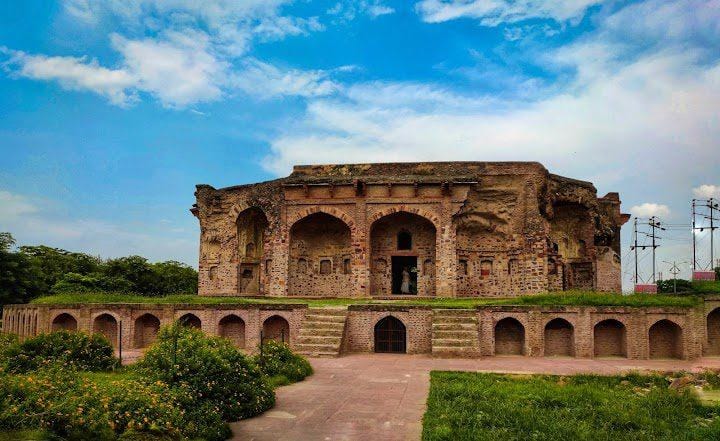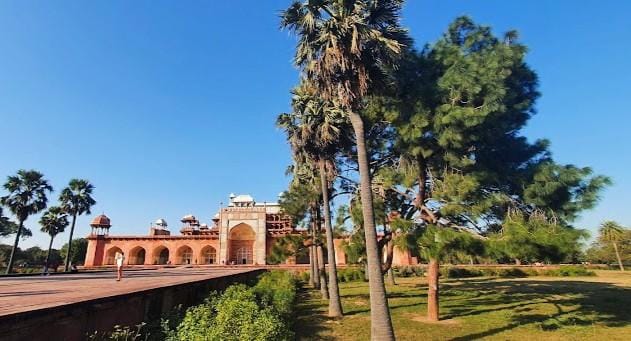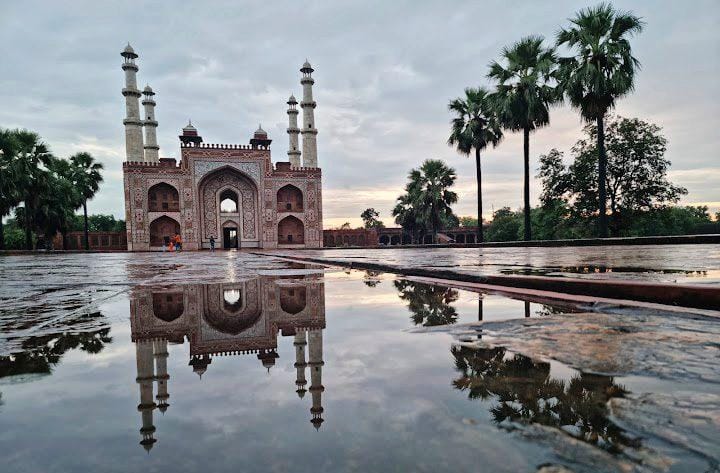Summary
The Tomb of Akbar the Great, built between 1605-1613 in Sikandra, Agra, is a stunning Mughal-era mausoleum. Commissioned by Akbar and completed by Jahangir, it blends Persian, Hindu, and Islamic architectural styles. Made of red sandstone and white marble, it symbolizes Akbar’s vision of religious tolerance and grandeur.
Location
- Tomb of Akbar The Great Area, Sikandra, Agra, Uttar Pradesh 282007
Full Story
The Tomb of Akbar the Great, located in Sikandra, a suburb of Agra, India, is a significant historical and architectural landmark. It serves as the final resting place of Akbar, the third Mughal emperor, who ruled from 1556 to 1605. The tomb is a fine example of Mughal architecture, blending Islamic, Hindu, Buddhist, Jain, and Christian motifs, reflecting Akbar’s philosophy of religious tolerance and syncretism.
Historical Background:
- Akbar’s Reign: Akbar (1542–1605) was one of the greatest Mughal emperors, known for his administrative reforms, military conquests, and promotion of art and culture. He established a centralized administration and fostered a multicultural empire.
- Construction of the Tomb: Akbar himself initiated the construction of his tomb during his lifetime, a practice common among Mughal emperors. The construction began around 1605, the year of his death, and was completed by his son, Jahangir, in 1613.
- Architectural Significance: The tomb is a precursor to the Taj Mahal, showcasing early Mughal architectural elements. It combines red sandstone with white marble, featuring intricate carvings, geometric patterns, and calligraphy.
Architectural Features:
- Layout: The tomb is set within a large walled garden, known as a char bagh (four-part garden), a hallmark of Mughal architecture. The garden is divided into four quadrants by walkways and water channels, symbolizing paradise in Islamic tradition.
- Main Structure: The tomb itself is a pyramidal structure with five terraces, each diminishing in size as they rise. The topmost terrace is crowned with a marble pavilion.
- Entrance Gate: The southern gate, known as the Buland Darwaza, is the main entrance and is an impressive structure in itself. It is adorned with intricate inlay work and calligraphy, featuring verses from the Quran.
- Decorative Elements: The tomb is richly decorated with carvings, inlay work, and painted designs. The use of white marble for the cenotaph and other decorative elements contrasts beautifully with the red sandstone.
- Cenotaph and Grave: The actual grave of Akbar lies in a subterranean chamber, while a cenotaph (a false tomb) is placed in the main hall above. This practice was common in Mughal tombs to honor the deceased.
Historical Significance:
- Symbol of Akbar’s Legacy: The tomb reflects Akbar’s vision of a unified and tolerant empire. The architectural synthesis of different cultural elements symbolizes his policy of Sulh-e-Kul (universal peace).
- Later History: Over the centuries, the tomb has faced damage from natural disasters and human actions. During the British colonial period, parts of the tomb were vandalized, and some decorative elements were removed.
- Restoration Efforts: In recent years, the Archaeological Survey of India (ASI) has undertaken restoration efforts to preserve the tomb and its surroundings.
Present-Day Importance:
Today, Akbar’s Tomb is a protected monument under the Archaeological Survey of India (ASI) and a popular tourist attraction in Agra. Surrounded by lush gardens, it offers a serene and historically rich experience, giving visitors insights into Mughal architecture and Akbar’s legacy.












































Reviews
There are no reviews yet.